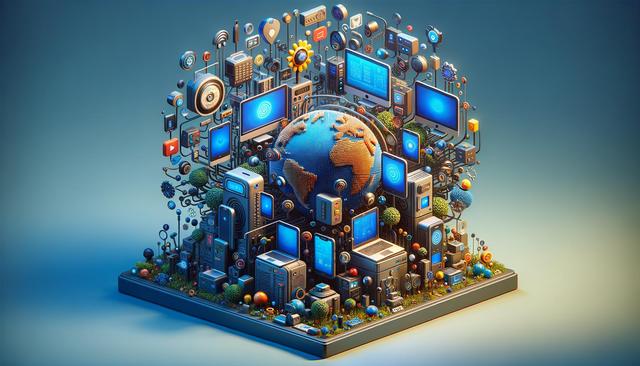
Unlocking Efficiency: Exploring Remote Device Management Applications
Understanding Remote Device Management
Remote device management refers to the ability to monitor, control, and maintain devices from a distance through a centralized platform. These devices can include smartphones, tablets, laptops, desktops, and even IoT systems. The core objective of this approach is to provide IT administrators and support teams with tools to ensure devices are secure, updated, and functioning efficiently—regardless of their physical location. As remote work continues to gain traction, the need for such applications has moved from being optional to a critical business requirement.
Key features often found in remote management tools include:
- Real-time device monitoring and health checks
- Remote software installation and updates
- Security enforcement through policies and compliance tracking
- Remote troubleshooting and control
- Data backup and remote wipe capabilities
These features are designed not only to enhance operational efficiency but also to reduce downtime and mitigate security risks across distributed workforces. As businesses scale, managing numerous endpoints manually becomes impractical, making remote device management an indispensable solution.
Benefits for Businesses and IT Teams
The implementation of remote device management applications offers several tangible benefits for businesses of all sizes. For IT teams, these tools streamline the process of overseeing a wide array of devices, which can significantly cut down on the time and resources typically required for device upkeep and troubleshooting. Additionally, they provide a centralized dashboard that offers full visibility into the device ecosystem, allowing for quick decision-making and response in case of issues.
Some key advantages include:
- Enhanced device security through consistent policy enforcement
- Reduced operational costs by minimizing on-site support requirements
- Improved employee productivity due to decreased device downtime
- Audit trails and logs for compliance and accountability
From a business continuity standpoint, having the capability to manage devices remotely ensures that essential operations can continue even in times of disruption. This makes it easier for companies to maintain service levels and uphold customer satisfaction.
Use Cases Across Different Industries
Remote device management applications are not limited to a specific industry. Their flexibility and scalability make them suitable for a variety of sectors, each with unique needs. In healthcare, for instance, these tools can be used to manage tablets and devices used for patient care, ensuring they are secure and compliant with regulations. In education, they allow IT departments to maintain student and faculty devices, keeping learning environments functional and secure.
Other industry applications include:
- Retail: Managing POS systems and digital signage across multiple locations
- Manufacturing: Monitoring and updating industrial IoT devices on factory floors
- Finance: Securing endpoints that access sensitive financial data
- Logistics: Ensuring mobile devices used by field staff are functional and trackable
This breadth of use demonstrates the adaptability of remote device management solutions, making them a strategic asset for various organizational needs.
Security and Compliance Considerations
With the growing number of connected devices, cybersecurity and regulatory compliance have become major concerns for businesses. Remote device management tools play a key role in addressing these challenges. By enforcing encryption, password policies, firewalls, and automatic updates, these applications help to establish a baseline of security that can be scaled across all devices in an organization.
Moreover, they assist in ensuring compliance with industry standards and regulations such as GDPR, HIPAA, and ISO certifications by:
- Maintaining audit logs for all device activities
- Implementing data access controls and permissions
- Enabling remote lock and wipe functions in the event of device loss or theft
These capabilities not only reduce the risk of data breaches but also support proactive compliance management, which is critical for industries with stringent regulatory environments.
Choosing the Right Solution
Selecting the right remote device management application depends on several factors, including the size of the organization, the types of devices used, and specific security requirements. It’s important to evaluate tools based on their features, scalability, ease of use, and integration capabilities with existing systems. A solution that supports cross-platform management (Windows, macOS, Android, iOS) is particularly valuable for organizations with diverse device ecosystems.
Consider the following when making a decision:
- Does the solution offer real-time monitoring and alerts?
- Is it cloud-based or on-premises, and which aligns better with your infrastructure?
- What security protocols are supported?
- How intuitive is the user interface for IT teams?
- Can it integrate with existing software tools like helpdesks or asset management systems?
Taking the time to assess these aspects can help businesses invest in a solution that not only meets current needs but also scales effectively as the organization grows.
Conclusion: Empowering Modern Workforces
Remote device management applications are increasingly vital for organizations operating in dynamic and distributed environments. By offering centralized control, enhanced security, and operational efficiency, these tools empower IT teams to support a modern workforce effectively. As businesses continue to adapt to hybrid work models and digital transformation strategies, investing in robust remote management solutions becomes not just a tactical move but a strategic necessity.